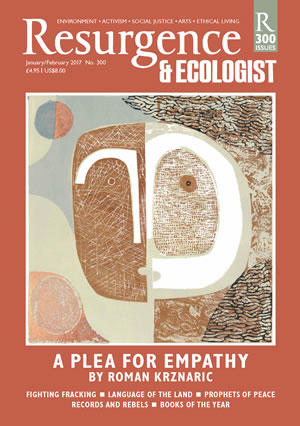At huge expense, commerce and governments have encouraged our farmers to raise crops and livestock in ways that demonstrably are bad for us and for the biosphere. Instead, argues Graham Harvey, we could feed ourselves well and in ways that are socially and environmentally friendly just by making proper use of the vegetation that occupies 60–70% of the world’s farmland: namely, the grasses and herbs collectively known as pasture.
In particular, Harvey argues, we have been told since the 1970s that too much fat, and especially saturated fat of the kind found mainly in animals, is bad for us: that it makes us fat, and causes cholesterol-based plaques to build up in the arteries, which leads to coronary heart disease (CHD). So we have been told to cut down on red meat. Meanwhile, as was first mooted in the 1950s by the nutritionist Sir Hugh Sinclair, polyunsaturated fats of the kind found in vegetable and fish oils reduce plaque, and hence the risk of CHD. The 1970s thus also began a vogue for sunflower-oil-based margarines.
But the story has proved to be far more complex. The polyunsaturated fats are of two main kinds, or ‘series’: omega-3s (largely fish oils), and omega-6s (as for example in sunflower oil). Both must be supplied ready-made in our food. Both play many roles in the body, not least as vital components of cell membranes. The two, it seems, are needed in roughly equal amounts. Excess of either is apparently damaging.
Now it turns out that when cattle are fed largely on concentrate – cereals and pulses – in industrial systems, their fat is highly saturated, with low levels of polyunsaturates. But when they are fed on pasture, their fat contains much more omega-3 and omega-6, and in roughly equal amounts.
In other words, cereal-fed (industrial) beef may well be bad for us, but grass-fed beef (and sheep) should be positively beneficial. Coincidentally, pasture-fed livestock should not produce more greenhouse gases than the intensive, cereal-fed kind. Well-managed pasture is a net carbon sink.
So it seems that the nutritional theory that has prevailed for the past 40 years and more is deeply flawed – and so too is the attack on traditional livestock based on climate change. In pointing this out, Harvey has done the world a great service.
Alas, he doesn’t leave it there. While promoting grass-fed livestock he also tells us that cereals are bad for us. Our pre-agricultural ancestors did not eat modern wheat and maize and the rest, he says, and so such fare is not natural – and this, rather than red meat, is a prime cause of the world’s nutritional disorders.
There are indeed very good evolutionary reasons to think that natural foods are better than unnatural – our bodies are adapted to them. But cereals are not as unnatural as all that. We don’t know in detail what our hunting-gathering ancestors ate, but on the African savannah they surely ate a lot of grass seeds, which is what cereals are. (True, nutritional diseases increased as agriculture spread, and agriculture ever since Cain has largely meant arable, which mostly means cereals. But correlation is not cause.)
Right now, the science of nutrition is up for grabs. Harvey is right to point out that the grass/polyunsaturated fat story is looking good. But most of the many hundreds of dietary recommendations out there, including the down on cereals, are at least premature. It’s dangerous to cross the line between science and evangelism.







